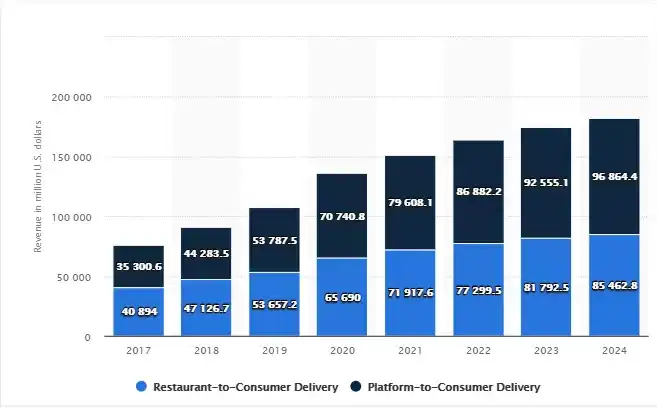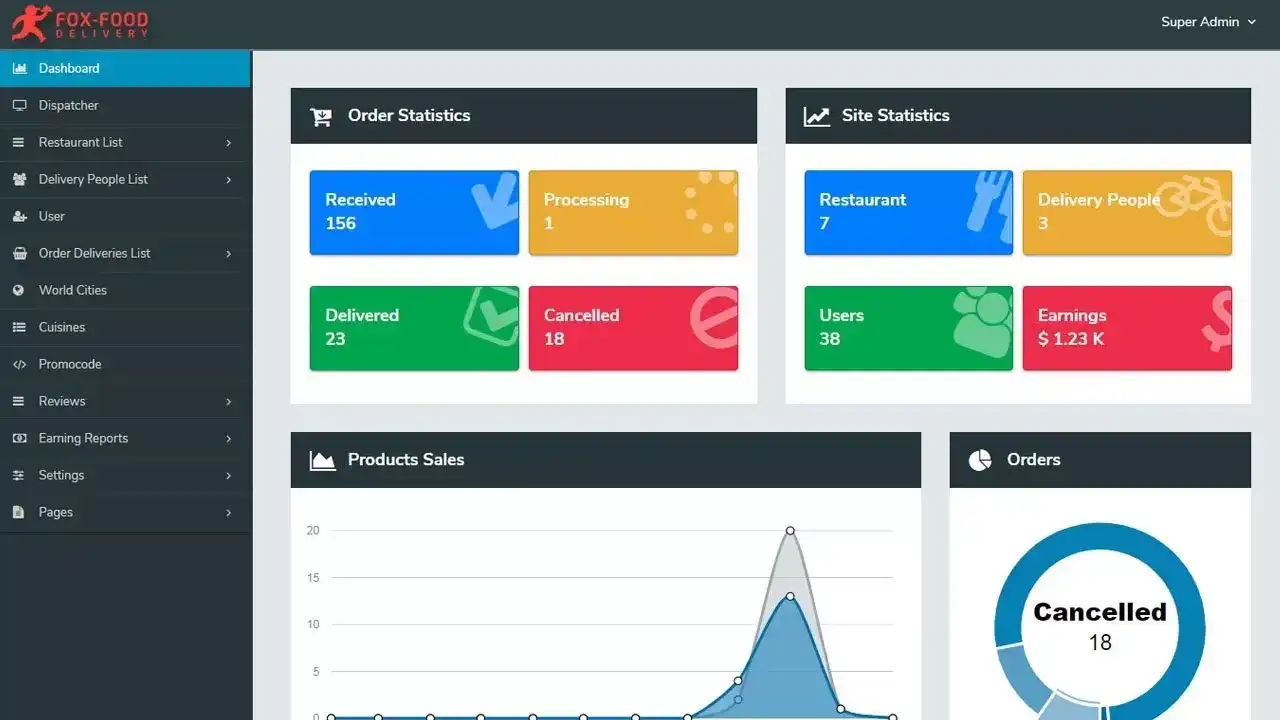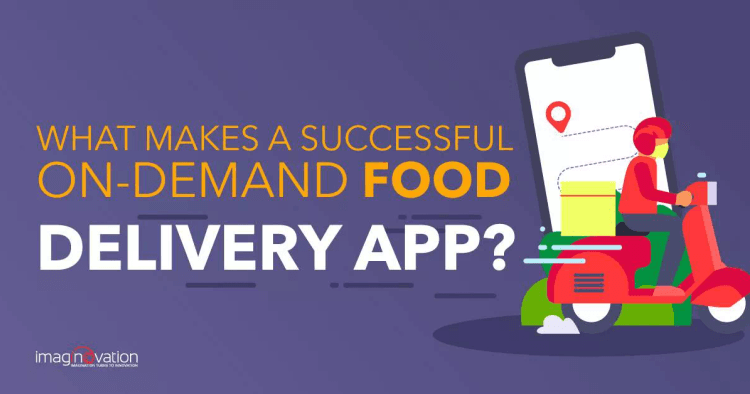The on-demand food delivery apps are enjoying a windfall.
With the Covid-19 crisis, everything changed overnight. Customers want to stay away from the contagion. That’s why online food delivery apps have become valuable. Customers can order food online from the comfort of their homes and get it delivered right at their doorstep. And that’s super!
As a food delivery business, you may want to up the gameplay by developing a robust delivery app like UberEats or GrubHub. To boost your endeavor, here are some critical facets of on-demand food delivery app development.
Let’s dive in!
On-Demand Food Delivery as a Business
Imagine chilling out with your buddies, watching your favorite web series, and relishing food that you’d just ordered online. The experience is fun and convenient.
The concept of food delivery has been around for some time. Still, the whole business of delivering food has become more prominent than ever. Here are some statistics that emphasize the point.
Online Ordering and Delivery Statistics
- 60% of U.S. consumers order delivery or takeout once a week. (Source)
- Digital ordering and delivery have increased by 300% when compared to dine-in traffic since 2014. (Source)
- The on-demand food delivery business recorded unprecedented growth worldwide, with over 14% CAGR from 2018 to 2020.
- On-demand delivery apps Instarcart, Walmart Grocery, Shipt, and Target, have recorded a surge in daily downloads of 218%, 160%, 124%, and 98% respectively recently. (Source)
- According to Statista, in 2024, the revenue of the eServices Online Food Delivery segment Platform-to-Consumer Delivery worldwide would be around 96,864.4 million USD. (Source)

Image 1: Revenue forecast for the Online Food Delivery market worldwide from 2017 to 2024 (in million U.S. Dollars) | Image Source
Growing consumer demand for ordering food online is driving the growth of the market. It’s prudent that you consider mobile app development to boost your ROI. The market is beaming with opportunities, and it’s time you make the most of it.
Key Features to Consider while Developing a Food Delivery App with Examples
When you plan to venture into food delivery app development, you need to know some of the most trending features. Here are some top essential elements that can help you develop an outstanding app for your food business.
The first thing you need to know about the on-demand food delivery app development is to plot down your primary users/actors.
It’s quite simple, you have—
- The customer
- The admin and
- The courier or delivery person
Now, you can study their patterns, tastes, preferences, needs, and requirements. It’s fantastic to have features that best suit these users. So, you can consider three different kinds of food ordering mobile apps for your platform. These are—
- The customer side of the app
- The admin panel
- The courier or delivery person app
The user-specific features help to make your food delivery app more useful. Here are some key features for each kind of food delivery app.
 Image source: Freepik
Image source: Freepik
The App for the Customer
Your customers will frequently be using your food delivery app, so it would help if it is intuitive and easy-to-use. The customer app should allow your customers to find the right restaurant or dish that they wish to order. After ordering, the payment process should continue to be seamless.
1. Registration and Profile Creation
The registration process is probably one of the first steps of the customer interacting with your app.
*Quick Tip—it will help to make the registration hassle-free and fast.*
You must remember that your customers may choose not to complete the process if the process is complicated.
So, make the registration feature simple, allowing the user to finish the registration via social media accounts. Later, the users can customize the profile to their liking. The profile management feature needs to be supported with a secure and robust back-end to keep the user details safe.
2. Searching Food
The feature is the core of the food delivery app. After completing the registration process, the user will log in. Now, the user is ready to look for restaurants and food. When the user finds what the user wants, it results in quick order.
What can you do? You can add a smart list feature.
The facet can organize restaurants and cuisines by location, food preferences (gluten-free diets, nutrient-dense foods, desserts), and type of food (gourmet food or fast food), and cuisine from diverse nationalities. You can research the food preferences and make it as easy as possible for the user to find the desired dishes.
For example, the UberEats idea is to deliver a wide selection of foods to the tech-savvy millennial. Due to the specialized features, UberEats has helped establish a deeper bond between the consumer and the app.
Here’s another example, Grubhub lists almost every restaurant in the city, which gives the app users numerous options.
3. Reviewing the Restaurant Profile
The customer may also choose to see the restaurant profile while ordering food. They may want to check the location, the sort of food the restaurant delivers, and the pricing. The feature helps to conclude the order process, so remember to add this feature to your app.
4. Adding Food to Cart and Scheduling Orders
When customers find food that they want to order, they will want to add items on the cart. The users may prefer to order food from more than one location.
Here’s when the Cart feature comes in handy. It allows customers to place the order at one go, without placing multiple orders from more than one place.
Yet another essential feature is to schedule orders. Imagine having your pals visiting you after work; you’d not want to go home and cook.
Ordering food and having it delivered on time would help. The convenience of ordering food and getting it delivered at the right time makes the feature a must-have. With the COVID-19 situation, getting contactless delivery can be a benefit.
5. Making Payment Easy
As a business owner, payments are critical to your food delivery business. When you make the payment procedure simple-and-secure, it helps.
*What can you do? You may choose to incorporate all payment gateways or mobile wallet app services. You will find services such as PayPal, iOS Wallet, Stripe, etc.*
The payment options offer a wide range of choices to your customers. You can also provide promo or voucher codes that add excitement.
*Quick Tip—you should thoroughly check if the online payment information is safe and secure. Any compromises in security can thwart your reputation.*
6. Providing Delivery Person’s Contact Information
Let’s consider the customer has placed the order and confirmed payment. You may want to give the contact details of the delivery person to the customer. The feature helps the users in reaching out to the delivery person and tracking the order.
For example, Postmates’ customers can track the delivery guy’s location or the “postmate” once the users have placed their orders.
7. Tracking in Real-Time
The users can not only contact the delivery person to get a time estimate, but they can also track the progress in real-time. Now, that’s cool. The user can get a correct estimate that reduces the anxiety of waiting for the delivery.
For example, the most exciting feature for Deliveroo is that their average delivery time is 32 minutes.
8. Reviewing Order History
What if users want to see their previous orders? It’s always convenient to place similar orders.
What can you do? You can add the Order History feature to allow users to place the same order again.
Users can click to place the order again, eliminating the process of searching dishes and restaurants.
9. Rating the Food
Customers love to use the rate and review feature. It’s an incredible way of telling other users about their food experiences, and a must-have.
10. Additional Features—Offers, Promos, Push Notifications
The feature of Offers and Promos is essential for your food ordering app. It can play a significant role in customer retention and win brand loyalty. Who doesn’t like food for a discounted price? When customers get attractive promos and offers, they are delighted to order.
For example, Starbucks expanded its sales by 80% when it launched loyalty programs. Here’s another example, Deliveroo has lucrative promo codes and deals, especially for first-time users.
With many food delivery businesses, you need to create visibility and outshine your competitors. The sending push notifications feature, helps you to stay connected with your customers. You can reach out to your users and help with information like discounts, offers, etc.
The additional features are an excellent way to increase customer engagement.
The App for the Admin
Who will manage orders, set the prices, and keep running services efficiently? You’re right—the admin. The feature for the admin app is critical to keeping the service running efficiently.
Here are some of the key features that can come in handy for the food ordering app builder.
1. Registration and Managing Profile
The registration process will be identical across all the three kinds of apps. Logically, the admin will need to complete the registration process.
*Quick Tip—for an aggregator model that lists different restaurants for the customers, you may need this feature.*
Now, restaurants can register to your service, sharing their profile like their name and address, menu offerings, prices, offers, etc. After they register, restaurants can start receiving orders from the customers.
2. Assigning Orders
The assigning of orders is a must-have feature. With the feature, you or the restaurant can use the admin panel and allocate order requests to delivery personnel.
3. Dashboard
The dashboard is one of the most prominent features to run your service efficiently. You can manage your restaurant better. What’s more? You can get a quick view of the orders, deliveries, and payments on the dashboard. The facet helps to manage your business much more efficiently.

Image 2: Sample Image of Dashboard for an Admin Panel | Image Source
4. Managing—Content and Orders
The content is the core of your business. With the latest information, customers can quickly review restaurant information. For the best UX, you need to have optimized content on your admin panel.
For an aggregator model, restaurant owners can manage the information, including name, address, menus, working hours, etc. The users can stay assured of getting the latest and updated content from the food delivery platform.
Yet, another fascinating feature is order management. Restaurants can easily handle orders. What’s more? They can also manage payments, order history, etc. using the admin panel.
5. Additional Features for the Admin Panel
Here are some other features to include in the admin side for the food delivery portal development.
- The admin app should have the facility of managing and editing payment and financial accounts.
- The admin side should be able to send out notifications to the users. The push notification center can notify users of offers and discounts. The center can also analyze the user’s order history.
- The panel should be able to create loyalty campaigns and new offers.
- Analytics play a critical role in the food delivery business. With this facet, you can get a quick picture of the number of customers, the orders you are getting daily, etc.
The App for the Delivery Person
Your food ordering app has another important user—that’s the delivery person. Your app must include features that are suitable for the delivery person or courier.
1. Registering and Customizing Profiles
The first step for the courier or delivery person would be to finish the registration. After the process is complete, the delivery personnel can customize the profile and get it checked.
The restaurant or food delivery service can complete the verification. Finally, the personnel can start receiving orders and delivering them. For example, DoorDash has its own fleet of drivers who are called Dashers.
*Quick Tip—the profile creation and verification are crucial as they can limit criminal intents. It also protects your online customers from any fraud.*
2. Handling Orders
The delivery people can efficiently check out the order requests with this feature. They can quickly accept or reject new calls, making it convenient for them to manage all orders.
3. Tracking GPS and Navigation
For the delivery person, it’s imperative to find the accurate delivery location. Navigation and GPS tracking play a critical role here. The personnel can deliver the order at the right time with the help of this feature.
4. Status Update
Imagine as a customer you are waiting for an order, and you get an update about the progress. It’s a great feeling to know the status of your order.
The delivery person is responsible for the status updates. They can update whether the order is in progress, delayed, or delivered for a specific order. The customer gets a push notification and keeps them engaged.
5. Handling Payments via Wallet Feature
For the delivery personnel, taking payments and commissions online is essential. The wallet feature allows the person to receive and manage payments from the app and the restaurant. They can check out how much money they have in the wallet and withdraw money.
6. Delivery History
The delivery personnel may want to check out their deliveries and payments. The delivery person can use this feature to check all the previous deliveries and payment information.
Outlining Success
For food delivery business owners, there are no ready-made solutions for success. There are no secrets to staying ahead of the competition. The best way is to understand your customers, appreciate their distinctive needs, and develop a useful app.
On-demand food delivery apps are a rage, and customers can benefit from your distinctive app. If you are planning to invest in on-demand mobile app development, this is a perfect time. You can turn your idea into a profitable business
Develop a Successful On-Demand Food Delivery App With Imaginovation
The food delivery business has a strong growth curve. The time is just right to get started on your journey to build a food delivery app and make a mark in the mobile app world. If you are looking for the right partner to guide you through the process, get in touch with us.
We, at Imaginovation, understand every distinctive business need. We can help you create a thriving on-demand food delivery app.
Ready to build an app, but not sure where to start?
We've got you covered. Click the button below to get started.





